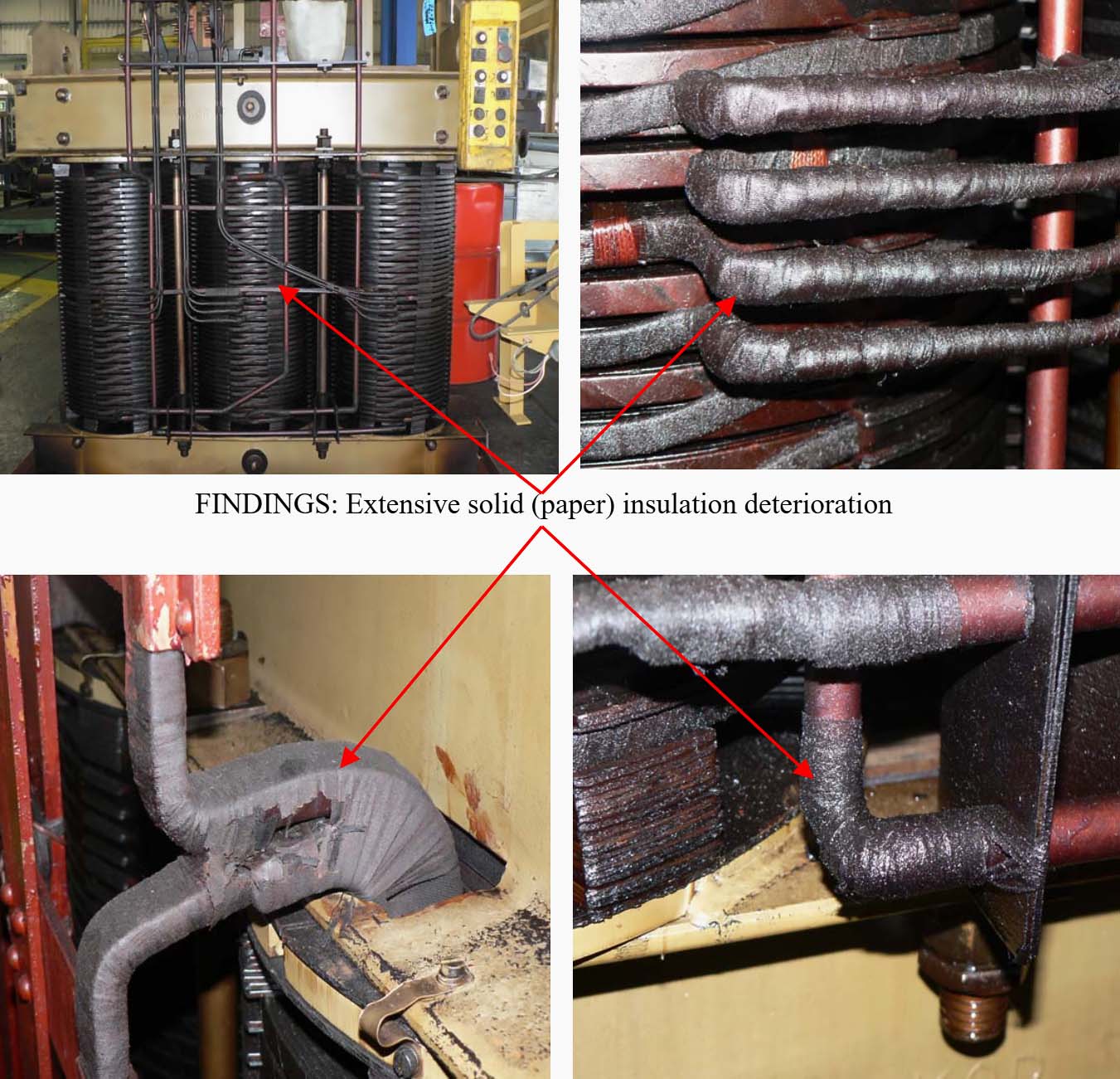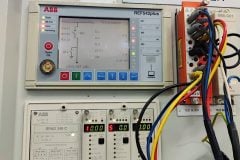Transformer oil & fortune telling
Insulation medium is an indispensable part of a power transformer, and the interesting thing about it is that it can drop dead at any time. Most of the time, this doesn’t happen, but… This article presents the transformer oil features by which one must abide. These features are examined according to standards to ensure the oil’s integrity. Transformer-impregnated paper is the determining factor in transformer age, so it is discussed extensively.

The importance of insulation was increased over the years due to the increase in the voltage rating of transformers. Within the last decades, although research on transformer insulation and diagnosis methods have been improved so much, the insulation of HV transformers remained more or less unchanged, and for EHV and UHV transformers, the oil–paper insulation is dominant.
Transformer oil has elements indicative of the transformer’s overall health. For example, a DGA transformer oil test shows levels of gases like acetylene and ethylene rising above a safe limit. This indicates the aging of the transformer.
Other crucial transformer oil tests are the Power/Dissipation factor and Oil breakdown voltage which indicate the dielectric strength and power factor of the transformer oil. Any deviation from ideal values is an alarming sign that the transformer needs attention to mitigate the risk of failure.
Transformer oil can be categorized into three types: Mineral oil, Silicone-based oil, and Bio-based oil. Owing to the excellent cooling and insulating property of mineral oils, these have been the most used transformer oil for many years. However, as years and research progressed, the shortcoming of mineral oils started to gain attention. Poor biodegradability, potential flammability, and low moisture tolerance are the most important concerns.
However, it is a topic for another day to discuss the suitability of these oil types.
Dissolved gas analysis (DGA) is an effective tool to assess transformer healthiness by monitoring key gases that have their corresponding failure modes.
Among different DGA analyses, two methods were explained-namely, IEEE C57.104 and Rogers method. The article offers five case studies along with their sample reports to have a sense of result interpretation.
1. Mineral Insulating Oil
Transformer oil is a mineral-insulating oil used in transformers and similar electrical appliances. Mineral insulating oil is obtained through refining, reforming, or mixing petroleum products with other hydrocarbons and additives. Additives are the chemicals added to the mineral oil to improve its specifications.
For example, antioxidants, metal passivators, electrostatic charging tendency depressants, gas absorbers, pour point represents, anti-foam compounds, and refining processes improvers are some additives.
The definition of these chemicals will be presented in the following:
- Antioxidant additives: compounds added to mineral insulators to improve oxidation stability, including inhibitors, peroxide decomposers, and metal passivators
- Inhibitors: an antioxidant additive containing various phenolic compounds including DBPC1 and DBP2 as described in IEC 60666.
- Other antioxidants: includes other antioxidant additives including sulfur or phosphorus compounds
- Metal passivators: metal passivator agents are essentially added as electrostatic charging reducers, but may also improve oxidation stability
Oil with a meager amount of inhibitor contains inhibitors less than 0.08% in accordance with IEC 60666. Finally, the oil containing inhibitors is mineral oil with a minimum of 0.08% and a maximum of 0.4% of inhibitors.
Moreover, the transformer oil type is divided into three groups based on the antioxidant additives. The first group contains no antioxidants, indicated by the letter “U”. The second group contains a meager amount of antioxidant additives and is indicated by the letter “T”. The third group also contains antioxidants represented by the letter “I”.
Suggested Reading – Do Not Energize Oil-Filled Transformer Just Like That!
Do Not Energize Oil-Filled Transformer Without Performing These 15 Tests and Checks!
Go back to the Contents Table ↑
1.1. Transformer Oil Feature
The characteristics of transformer oil must be in accordance with the specifications in IEC 60296. The details of these specifications can be found in the IEC 60296, and their list is as follows:
- Viscosity
- Pout point
- Water content
- Breakdown voltage
- Dielectric dissipation factor
- Appearance
- Acidity
- Interfacial tension
- Sulphur content
- Corrosive Sulphur
- Oxidation stability
- Flash point
- Tendency to absorb gases
- Density
- Polycyclic aromatic content (PCA)
- Polychlorinated biphenyl content (PCB)
- 2-Furfural content
- Particle content
- DBDS content
- Gases in oil
The oil tests could be classified into three types: routine tests, complementary tests, and special tests. The routine tests aim to evaluate basic characteristics that identify the oil proprieties, such as colour, moisture, dielectric breakdown voltage, etc. The complementary tests provide more insight of the oil status, especially if there is any anomaly in the routine tests.
The special tests give an overall view of the transformer oil in terms of physical and chemical properties. This classification is portrayed in Figure 1.
Figure 1 – Oil test types


Go back to the Contents Table ↑
2. Chemical Indicators
The useful life of the transformers is based on the life of its insulation system, the combination of cellulose and oil. In practice, some transformers even more than 50 years in power networks are constantly being used. The lifetime of an insulating system of a transformer is the lifetime of the paper used because the oil can be cleaned or even replaced during the lifespan of the transformer, but the paper is fixed from the beginning and is not repaired or replaced.
Therefore, the end of the transformer paper life is the end of its transformer life. It should be noted, however, that the oil status of a transformer plays a significant role in the aging process of cellulose.
As a result, different chemical indicators are used today to indirectly estimate the degree of polymerization with the values of these indicators.
Might be Interesting – A study of lifetime management of generator transformers
A study of lifetime management of generator step-up power transformers
Go back to the Contents Table ↑
2.1. Insulation Paper Life Determination
To determine the end of the paper life, a set of physical quantities must be measured, and then, based on the measurement results, a decision could be made about the end of the paper life. These quantities can be considered as mechanical properties such as elongation, pressure bearing, strength, and wear resistance or electrical properties such as dielectric strength, or chemical properties including the degree of polymerization.
The end of paper life can be a precise amount of these quantities or a percentage of paper loss. At first, it might seem that the paper’s dielectric strength is the best value.
That being said, it was proved that if the paper was not exposed to mechanical stress, the dielectric strength of the paper would decay very slowly.
Go back to the Contents Table ↑
2.2. Degree of Polymerization (DP)
The DP is measured according to IEC 60450. Hence, not only cellulose but also hemicellulose and lignin are broken down. Therefore, DP is a sum total value. In the explanation of DP, it can be said that in the polymer or cellulose molecule, there are long chains that contain rings or glucose monomers and the number of rings in each string reaches 1000–1400.
The average number of glucose rings in a molecule or cellulose polymer is the DP.
Cellulose is constantly affected by the heat generated by the active part of the transformer, the moisture content, the oxygen concentration in oil, acids produced in the oil, and other factors such as metal catalysts which generally cause cellulose decomposition, degradation, and deterioration. Insulation decomposition is a chemical phenomenon.
Figure 2 – Transformer paper insulating aging


Three mechanisms of degradation hydrolysis, pyrolysis, and oxidation act simultaneously. Hydrolysis is the decomposition of a chemical compound by reaction with water. On the other hand, pyrolysis and oxidation are the decomposition processes resulting from heating and interacting with oxygen, respectively.
The cellulose paper degradation results in water, acid, furans, carbon oxides, and hydrocarbons. Many mechanisms have been proposed for the thermal degradation of cellulose based on which of the pyrolysis or hydrolysis processes are dominant. In the hydrolysis and pyrolysis processes, furans, especially 2-furfural will be produced.
Basically, water and carbon oxides are the main products of cellulose degradation and furans are the second products, and acids and other products are among other products.
As seen in Figure 3 paper deteriorates over time and weakens the insulation system against thermal, mechanical and electrical stresses.
Cellulose is constantly affected by the heat generated by the active part of the transformer, the moisture content, the oxygen concentration in oil, acids produced in the oil and other factors such as metal catalysts which generally cause cellulose decomposition, degradation and deterioration.
Figure 3 – Cellulose ageing and destruction in an old transformer


Go back to the Contents Table ↑
2.2.1. Relationship between Furans and DP
Furans are the main products of cellulose degradation and decomposition inside the transformers. For analyzing the paper, furans analysis is a very convenient method compared to paper sampling. It was found that the 2-furfural concentration in oil and the DP value are interrelated logarithmically in the case of the paper degradation process.
Fault assessment is determined by the method depicted in Figure 4 adapted from “An Introduction to the Half-Century Transformer by the Transformer Maintenance Institute, S.D.Myers Co., 2002”.
The furan test (2-furfural) confirms the remaining life of the insulation paper of the transformer.










